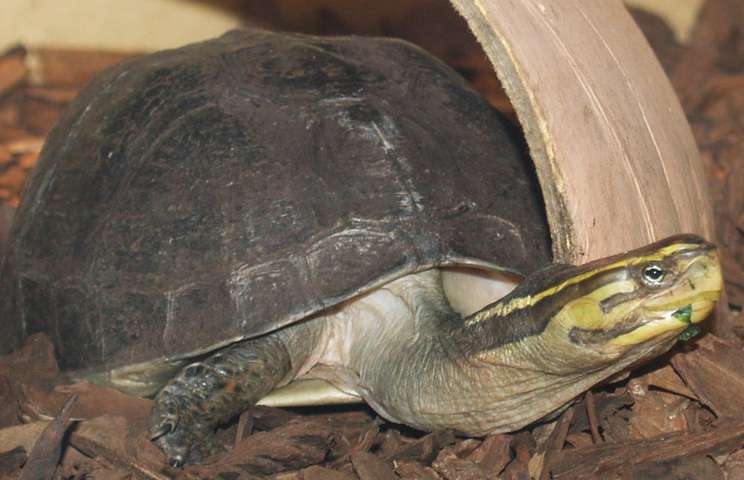
The Mediterranean, North Africa, and all of Europe are home to European Pond turtles. There are roughly 14 regional subspecies that are recognized. The European Pond turtle lives in wetlands with wooden cover across its range. When seeking food, these semi-aquatic turtles have been known to venture up to 2.5 kilometers from the ocean.
Dark-brown turtles from the European Pond are often all the same hue, with yellow patches running along the rim. They consume a variety of foods, especially when they are young. Amphibians, tiny fish, insects, mollusks, worms, and vegetation are all edible to European Pond turtles.
Care as a Pet

Housing Summer
A fenced-in garden pond that receives continuous direct sunlight is ideal. With a platform (like a log) for basking and a land area with a sandy slope for oviposition, it should offer a diversity of deep and shallow places. Wire mesh must be used to protect young children under 3 from predators like cats, rodents, snakes, crows, and raptors.
Transitional periods
During the spring, the majority of Emys subspecies can be put directly into ponds provided that they have wide, shallow regions that will quickly warm up in the sunlight. If not, turtles can be kept in large, well-designed indoor freshwater aquariums with a basking ramp.
Turtles should stay outdoors in the fall until they are ready to hibernate so that their metabolism can properly slow down. At this point, it’s crucial to refrain from warming turtles because doing so will disrupt the changeover process unnecessarily. Emys of the northern subspecies should hibernate in the winter at temperatures about 4°C, possibly in a refrigerator.
Feed
All types of aquatic plants, such as water hyacinth (Eichornia crassipes), duckweed (Lemna minor), and water lettuce, as well as snails, slugs, water insects, earthworms, dead flies, mussels, whole fish (smelt, guppies, and trout), and very good cat food (meat or fish content at least 60%) are acceptable sources of food (Pistia stratiotes).
Table





